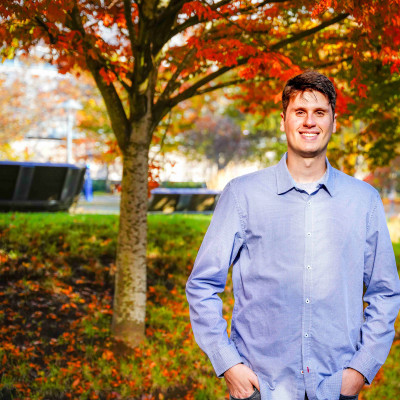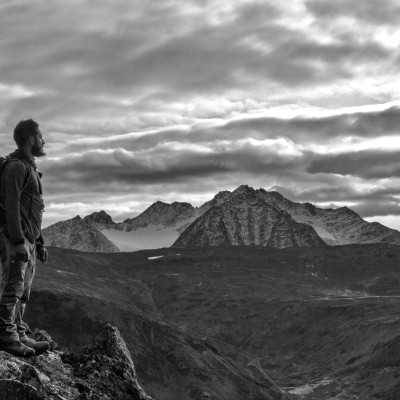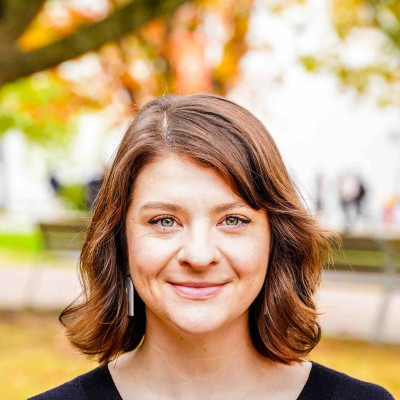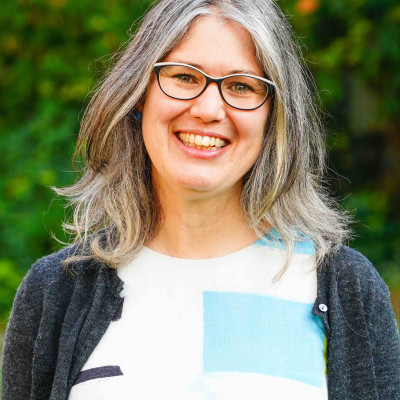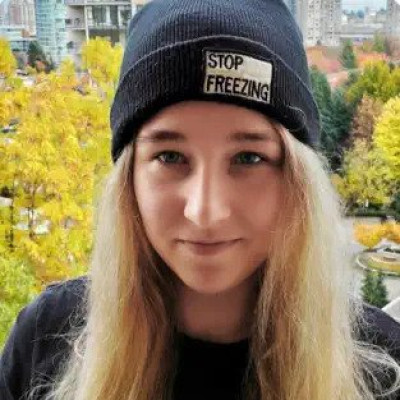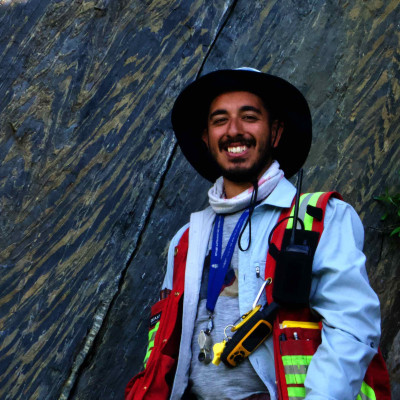News
Stay up-to-date with what's happening in EOAS
With Vanier Scholarships – Davi Monticelli
Davi de Ferreyro Monticelli, Vanier Scholar and PhD student in Atmospheric Sciences at UBC EOAS, originally from Brazil
What path have you taken that has led you to a PhD at UBC EOAS?
I found out that the Atmospheric Sciences program at UBC is very prestigious and has good funding for international students, which has always been an important part of the decision of where to study for me. I also realized that the scholars who are part of the group are great names in meteorology and atmospheric sciences in general, so I knew that in terms of next steps for my research pathway, I would be able to study and research with some of the best.
I also did a one-and-a-half-year exchange program at the University of Auckland in New Zealand in my undergrad, which allowed me to realise how important a good education could be in terms of what you get when you study at a world’s top 100 or 50 university, so I knew I had to leave Brazil to study in an environment where I could thrive.
Lastly, my supervisor and the type of research she does here was a really big draw for me. She does a lot of research with real-time measurements and data of atmospheric pollutants, which is something that I did not see much in my undergrad and Master’s study. I have a background in dispersion modelling but I knew I had to come up with a way to be involved with instrumentation and real time measurements. I know this is the future and would complete my education portfolio.
What did you study at undergrad/masters?
For my undergrad I did Environmental Engineering in Brazil. I watched a lecture from my (future) Master’s supervisor in air quality in urban regions and it completely caught my attention. I realized I really had to study this further because I was so interested in it, so ever since then I started doing co-ops and internships with scientific research groups and consultants related to air quality. Then for my Master’s degree, I continued in Environmental Engineering but with more of a focus on air quality as well. I was driven into modelling in both my undergrad and Master’s, but now I am doing something a little different to complete my portfolio.
What is your PhD project?
I came to Canada to study the air quality impacts of the cannabis cultivation industry, which has recently been changed to both medicinal and recreational usage. This change, however, happened without accompanying (and necessary) studies about the environmental impacts of this industry. Not that this is the industry with the highest impacts as there are many others which are higher (e.g., cars, construction), but still, it is an industry with immense potential to grow so we need to take some steps before we get to the point when it is hard to change what has already been done. We do not want industrial practices to get so entrenched that we can not change them before we know if there is a better way of doing things, as we have seen in many other industries.
When I applied for the position here, I talked to my supervisor who said that there was this ongoing project available. Some of the pollution from the cannabis cultivation industries (CCIs) is in the form of unpleasant smells, which is something I had experience of from my research back in Brazil.
The first year has been pretty good. I dedicated a lot of my time to doing a literature review which was published earlier this year, and over summer I spent a lot of time in our PLUME portable laboratory doing fieldwork. Now I will start analysing that data and dive deeper to see what actually is the impact from this industry locally.
How will becoming a Vanier scholar affect the path of your PhD?
The Vanier scholarship has created a change in my Ph.D. that was not totally expected, but at the same time, if I had thought about it in greater detail I would have perhaps foreseen.
When I first came here to do my PhD, my stipend was paid by a grant that was dedicated to seeing how the CCIs would change air quality. So essentially, my PhD would have to respond to the funding I was given, so I did not have as much flexibility. But now with the Vanier scholarship, I am essentially self-funded, so I have more liberty to choose the direction I want to take my PhD project in.
This does not mean I am going to stop researching about CCIs, which was what I put on my Vanier application; it means CCIs can be part of my PhD and do not have to constitute the whole thing anymore. Instead, I am able to focus on wider-reaching research on how smells affect air quality in the Greater Vancouver area, using public data collected via an app (“smell Vancouver”) to identify regions that warrant further investigation with the PLUME van. Therefore, I think I will end up shifting my research a little bit to the relationship between odours and air quality and what I can do about it.
What advice would you give to anyone applying for the Vanier scholarship?
The scholarship considers three things in equal measure: your academic performance, your research potential, and leadership qualities. The leadership part is really what makes this scholarship different from most scholarships that are out there, and also the part which is hard for students, and especially international students, to have the necessary background.
There are many ways you can express leadership, such as volunteering, committees, participating in department meetings, advocating for something. What I would say is you should seek out these opportunities as one third of your evaluation is based on that. I think this really puts you ahead of other applicants who may be lacking a little in this aspect.
Finally, what are you most excited about in the rest of your PhD project?
I hope to help the most people I can in terms of connecting smells and air quality, and especially the health effects aspect of this research. So far in the literature, smells have been associated a lot with annoyance but health implications have been overlooked. I hope in the next two years or so I will be able to put out some good science to answer questions related to this topic and help the most people possible.
In the field: revealing the geologic history of the world's largest undeveloped Zn-Pb deposits
In the past summer, Darius Kamal, EOAS Ph.D. student in Geological Sciences supervised by Dr. Kenneth Hickey, went on fieldwork in the Mackenzie Mountains, western central Yukon.
“The focus of my research is on the world-class Howard's Pass Zn-Pb district located on the border of the Yukon and the Northwest Territories,” said Darius. The cluster of 15 deposits is the world's largest undeveloped Zn-Pb resource, but despite decades of geological work, the structural geometry and kinematic history of the deposits and surrounding region are poorly understood. To understand what happened in the past for the deposits, Darius is undertaking a project to define the geometry and kinematic evolution of Neoproterozoic to the latest Paleozoic rocks in the region between Macmillan Pass and Howard’s Pass in the Selwyn Mountains.
During the fieldwork this summer, Darius collected data to assess the role that faults on the margin of NW Laurentia in the Siluro-Devonian may have played in the localization of shale-hosted massive sulfide Zn-Pb deposits, and whether these faults were preferentially reactivated and controlled the pattern of crustal shortening during the Cretaceous Cordilleran orogeny. He is also looking at the chemical, mineralogical and textural effect of Cordilleran deformation of the Zn-Pb orebodies themselves, especially the remobilization of sphalerite.
“This study will help constrain the role deformation plays in affecting the geometry, distribution, and economic viability of shale-hosted massive sulfide deposits. It will contribute new lithostratigraphic and structural maps towards future exploration within the Selwyn basin and provide useful analogies for exploration within other inverted sedimentary basins globally,” said Darius.
BC's Fossil Bounty with Dr. Kendra Chritz
EOAS’s very own Dr. Kendra Chritz was featured on BC’s Fossil Bounty to explain how she uses fossil teeth to investigate ancient earth environments. The episode follows her science journey from a curious childhood, to her beginnings as a young researcher reconstructing the paleoecology of ancient Ireland using stable isotope analysis of Irish Elk teeth fossils. Scroll down to watch the episode.
Today, Dr. Chritz remains fascinated by stable isotope analysis and its power to tell us about the chemistry of past environments. She continues using stable isotope methods, but now in human rather than elk fossils, to investigate the connection between humans and the environment. Dr. Chritz’s research shows that humans have had a strong influence on their environment since our very beginnings. The earliest members of our genus, Homo erectus, evolved 2.6-2.8 million years ago. Their emergence coincided with the advent of hunting tools and the conspicuous collapse of several large mammals in Africa. Since then, major ecological transformations have occurred following periods of human technological advancement, such as the advent of fire and farming. The Anthropocene, the geological epoch defined by humans’ reshaping of the environment, has been formally defined as beginning in 1950. However, Dr. Chritz challenges this definition and questions if the Anthropocene should be redefined as beginning with the very emergence of the earliest members of our lineage.
To answer her questions about the braided evolution of mammals and Earth’s environment leading up to the Anthropocene, Dr. Chritz applies stable isotope analysis methods to the teeth of ancient mammals. In addition to human teeth, Dr. Chritz studies mammals like Oriodonts (ancestors of today’s pigs and cows). By analyzing the carbon isotopes in tooth enamel, she can reconstruct the diet of ancient organisms to determine what food was available at the time and the role different organisms played in the ecosystem.
Dr. Chritz's work with fossils has led to a passion for natural history museums. In addition to her research position, Dr. Chritwz has stepped into the role of Fossil Director at the Beaty Biodiversity Museum with the goal of preserving and highlighting BC’s abundance of fossils for future scientists and public appreciation.
Watch the BCs Fossil Bounty Episode:
An education in Climate Action at UBC
In September 2019, nearly 100,000 Vancouverites walked out of their offices, workspaces, and classrooms to join the climate strike. Just prior to the city-wide march, an estimated 4,000 - 5,000 students and faculty assembled for a UBC climate strike to demand climate action from the University leaders with a focus on climate justice. The movement ultimately led to the university declaration of a climate emergency and a resolution to offer courses explicitly centering climate education.
EOAS Professor Tara Ivanochko heard this call to action and began building an interdisciplinary course list together with Professors Jessica Dempsey and Nina Hewitt of the Dept. of Geography and a number of full time student consultants. Thus, the Climate Action and Studies certificate program was born. The 18 credit certificate program focuses on issues of climate science literacy, climate justice, and community building. The program, which was designed to be accessible to as many students as possible, offers an interdisciplinary climate education with courses across science, arts, forestry, and nursing disciplines. In fact, Dr. Ivanochko says one of the most surprising challenges the program has faced is that demand for the certificates is currently exceeding its 60 student capacity.
Each week students participate in two climate action labs. The action labs have two components: 1) students work in teams on real-world climate issues with outside collaborators, and 2) students reflect on their own climate action and involvement. This year, students are working in groups of four alongside the City of Vancouver to educate Vancouverites on the most effective ways they can reduce their carbon footprint. The City has found that although 88% of citizens are concerned about the climate, only 6% were able to correctly identify central heating and hot water as the greatest sources of carbon in Vancouver. Through this city engagement project, students have the chance to further develop partnerships with the City of Vancouver’s climate action team. In the future, students may continue to work with the city, taking on new challenges to contribute to the city’s climate action. Meanwhile, Professor Ivanochko is continuing to adapt the program so it may take more students in the future, as demand for climate education increases.
Meet Yulia Egorova - Biological Oceanographer
Yulia Egorova is a PhD student (majoring in Biological Oceanography) at the University of British Columbia (Department of EOAS). She completed her Bachelor’s Degree at Thompson Rivers University (TRU) in British Columbia, Canada, majoring in Environmental Chemistry. Prior to transferring to TRU, she was studying in Mendeleyev’s University of Chemical Technology (MUCTR) In Moscow, Russia (majoring in material engineering). Yulia also got a Diploma in Marine Biology at Oxford College of London. Yulia’s research is focusing on modelling mesopelagic zooplankton in a global ocean. In addition, she is very interested in teaching and curriculum design.
PhD student Darius Kamal awarded the 2023 Mary-Claire Ward Geoscience Award
Darius Kamal, a Ph.D. student in EOAS under the supervision of Ken Hickey, has been awarded the annual Mary-Claire Ward Geoscience Award for 2023. Each year this award is given to a graduate student in Canada whose thesis embodies the objective of increasing our knowledge of Canada’s geological history through field mapping.
Darius’ Ph.D. research aims to establish how rock deformation during tectonic collision events, which have led to the formation of western Canadian mountain ranges, impacts the distribution, preservation, and grade of sulfide-rich ore deposits. Darius’ research is focused on the region of the Selwyn basin around and between Howard’s Pass and Macmillan Pass deposits in eastern Yukon. Darius’s uses a number of geoscience methods to characterize the rock layers of the basin, integrating kinematic and microstructural analysis, Uranium-lead (U-Pb) carbonate dating of veins, whole rock and mineral geochemistry, micro- X-ray fluorometry, scanning electron microscopy, and Electron Backscatter Diffusion (EBSD) mapping. Darius’s research will not only significantly contribute to our understanding of the structural development of the Selwyn basin and the tectonic evolution of the Canadian western mountain ranges, but will also expand our knowledge of mineral system science of similar such deposits.
The Mary-Claire Ward Geoscience Award is administered by the Geological Association of Canada (GAC), the Prospectors & Developers Association of Canada (PDAC), the National Geological Surveys Committee, the Canadian Geological Foundation, and Watts, Griffis and McOuat Ltd.
